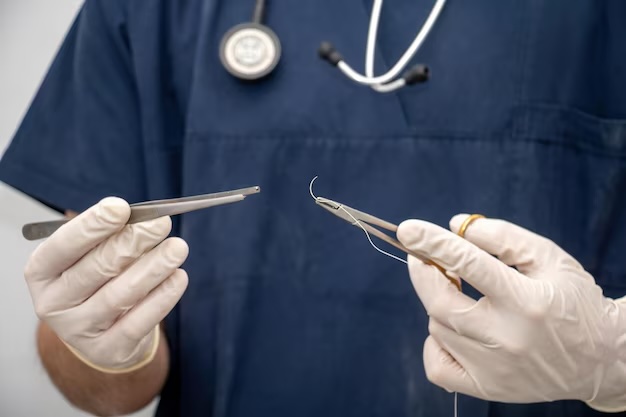Understanding the Different Types of Surgical Needle Holders
Posted by Carlos Rosado on Oct 25th 2025
Understanding the Different Types of Surgical Needle Holders
When it comes to surgical precision, few tools are as essential as the needle holder. Also known as a needle driver, this instrument allows surgeons to grasp and control suturing needles safely and accurately. While all needle holders share the same core function—holding the needle during suturing—there are many variations designed for specific surgical specialties and preferences.
- Mayo-Hegar Needle Holder
The Mayo-Hegar is one of the most common general-purpose needle holders used across surgical disciplines. Features:
Heavy, durable jaws suitable for medium to large needles
Ratcheted locking mechanism for secure grip
Serrated jaws for improved control
Typical Uses: General surgery, gynecology, and orthopedics where medium or large sutures are used.
2. Olsen-Hegar Needle Holder
The Olsen-Hegar combines a needle holder and scissors in one instrument.
Features:
Built-in cutting blades for trimming sutures without switching tools
Slightly lighter design than Mayo-Hegar
Typical Uses:
Procedures requiring frequent cutting of sutures, such as minor surgical or dental applications.
Tip: Because of the cutting blades, precision handling is key to avoid accidental suture snipping.
3. Crile-Wood Needle Holder
Designed for finer suturing work, the Crile-Wood offers a more delicate grip.
Features:
Narrower jaws than the Mayo-Hegar
Tungsten carbide inserts for superior needle control
Lightweight and balanced for hand comfort
Typical Uses:
Cardiovascular, plastic, and ENT surgeries involving small needles or fine sutures.
4. Webster Needle Holder
The Webster is a small, lightweight instrument primarily used in delicate surgeries.
Features:
Smooth or fine-serrated jaws
Short length for precise fingertip control
Typical Uses:
Plastic, facial, and hand surgery where delicate tissue handling is critical.
5. Castroviejo Needle Holder
A staple in microsurgery and ophthalmology, the Castroviejo offers unmatched precision.
Features:
Spring-handle mechanism instead of ratchets
Locking or non-locking versions available
Fine tips ideal for ultra-delicate sutures
Typical Uses:
Vascular, ophthalmic, and neurosurgical applications where precision and control are paramount.
6. Mathieu Needle Holder
The Mathieu stands out for its palm-grip handle and ratchet mechanism at the proximal end.
Features:
Ergonomic handle design for single-hand use
Ratchet locks automatically when pressure is applied
Typical Uses:
Dental, veterinary, and gynecological surgeries where quick, repetitive suturing is needed.
Choosing the Right Needle Holder
Selecting the proper needle holder depends on several factors:
- Needle size and suture material
- Type of tissue being sutured
- Surgeon’s hand size and comfort preference
- Specialty—from general surgery to microsurgery
Premium needle holders often feature tungsten carbide inserts, offering longer lifespan and improved needle grip compared to stainless steel alone.


